
My previous guide for Pingvin involved the use of Task Scheduler. Today I’m offering a recommended and excellent alternative for installing the latest Pingvin version via Portainer. Pingvin Share is self-hosted file sharing platform and an alternative to WeTransfer. With Pingvin Share there is no file size limit that you can share, only your disk will be your limit. In this step by step guide I will show you how to install Pingvin Share on your Synology NAS using Docker.
This guide works perfectly with the latest Pingvin Share v1.13.0 release.
STEP 1
Please Support My work by Making a Donation.
STEP 2
Install Portainer using my step by step guide. If you already have Portainer installed on your Synology NAS, skip this STEP. Attention: Make sure you have installed the latest Portainer version.
STEP 3
Make sure you have a synology.me Wildcard Certificate. Follow my guide to get a Wildcard Certificate. If you already have a synology.me Wildcard certificate, skip this STEP.
STEP 4
Go to Control Panel / Login Portal / Advanced Tab / click Reverse Proxy. Follow the instructions in the image below.
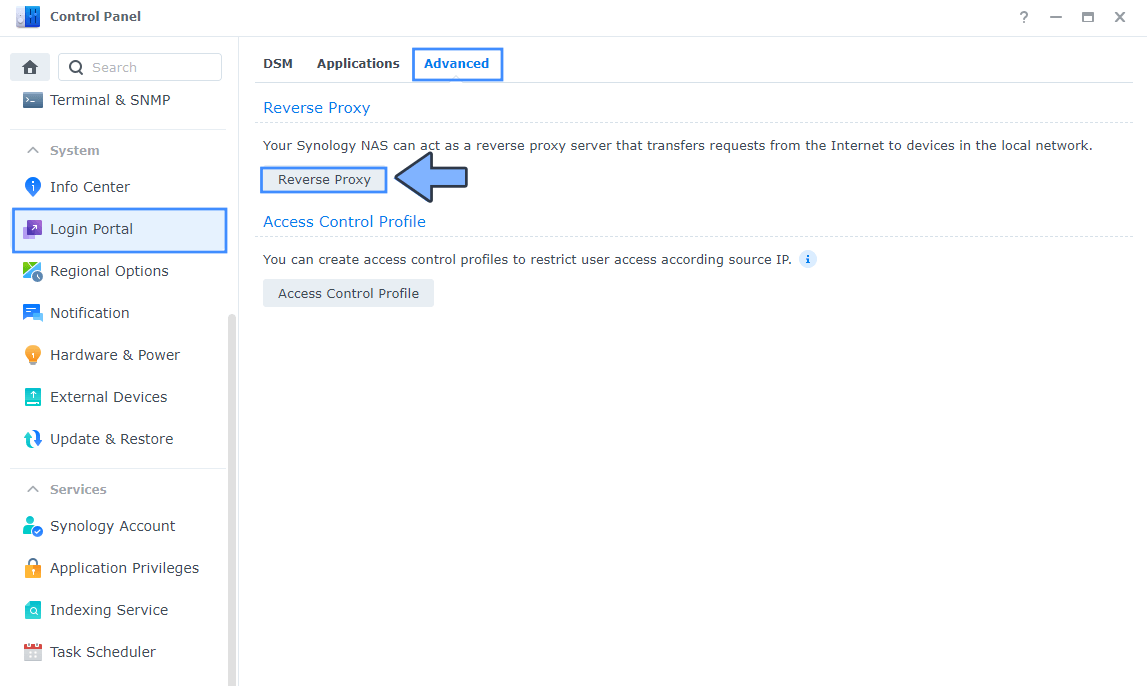
STEP 5
Now click the “Create” button. Follow the instructions in the image below.
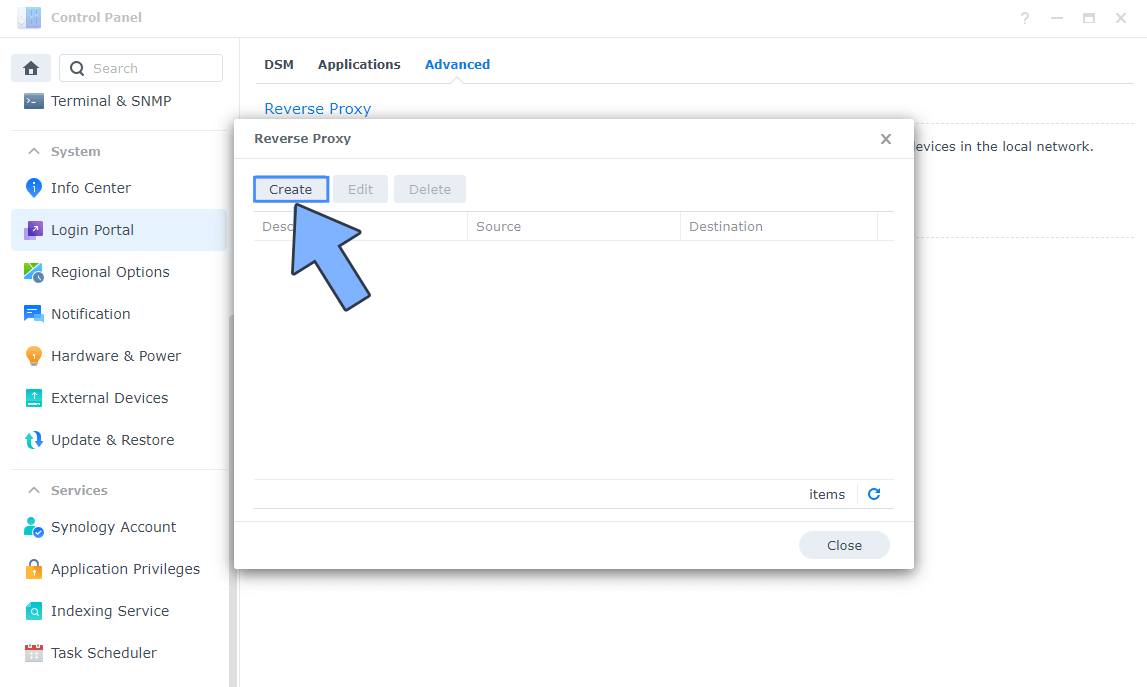
STEP 6
After you click the Create button, the window below will open. Follow the instructions in the image below.
On the General area, set the Reverse Proxy Name description: type in Pingvin. After that, add the following instructions:
Source:
Protocol: HTTPS
Hostname: pingvin.yourname.synology.me
Port: 443
Check Enable HSTS
Destination:
Protocol: HTTP
Hostname: localhost
Port: 6090
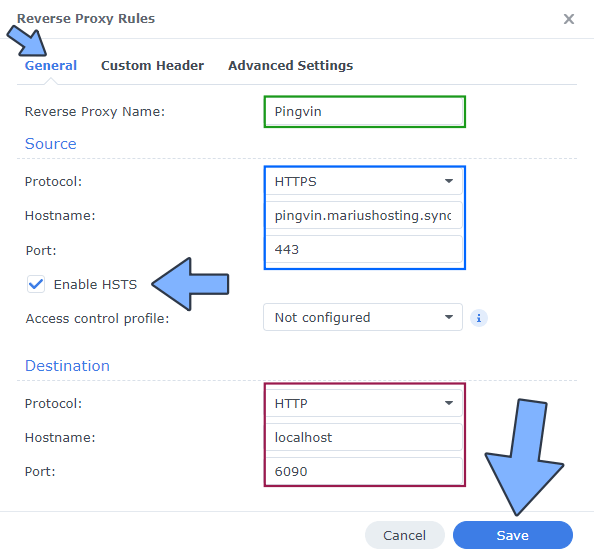
STEP 7
On the Reverse Proxy Rules click the Custom Header tab. Click Create and then, from the drop-down menu, click WebSocket. After you click on WebSocket, two Header Names and two Values will be automatically added. Click Save. Follow the instructions in the image below.

STEP 8
Go to Control Panel / Network / Connectivity tab/ Check Enable HTTP/2 then click Apply. Follow the instructions in the image below.
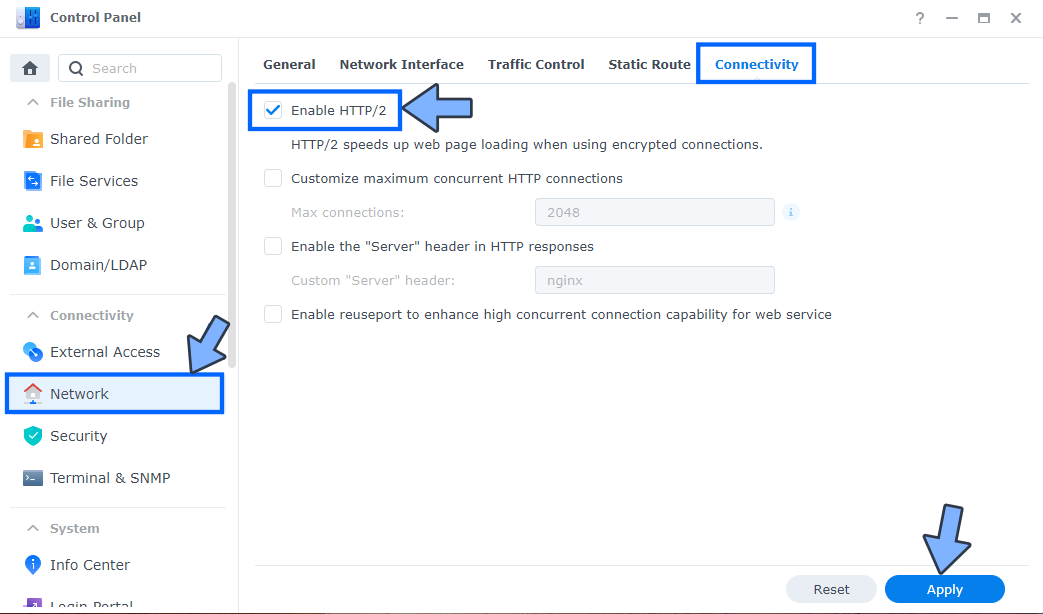
STEP 9
Go to Control Panel / Security / Advanced tab/ Check Enable HTTP Compression then click Apply. Follow the instructions in the image below.
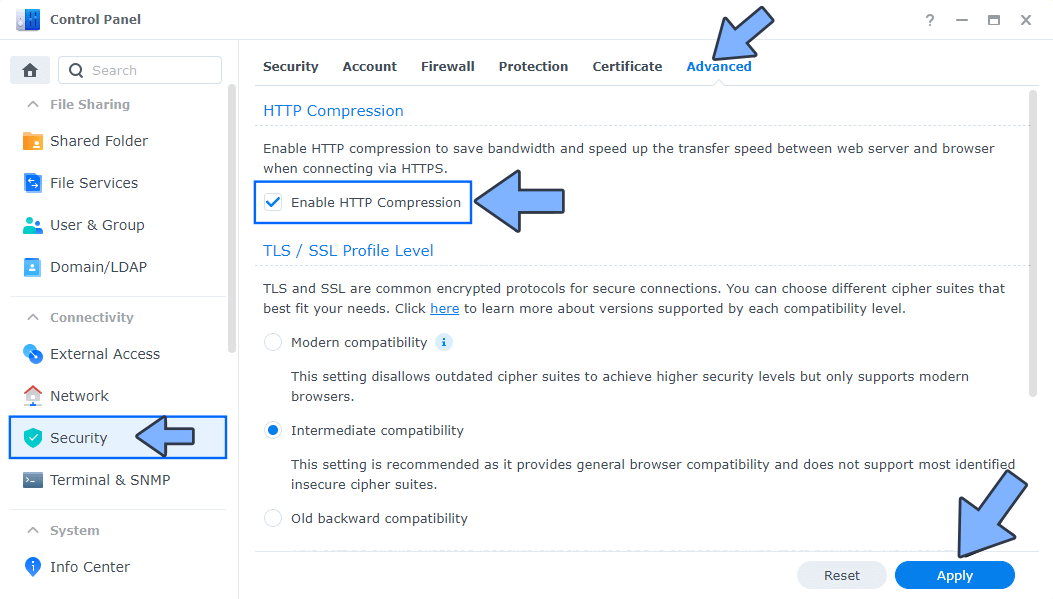
STEP 10
Go to File Station and open the docker folder. Inside the docker folder, create one new folder and name it pingvin. Follow the instructions in the image below.
Note: Be careful to enter only lowercase, not uppercase letters.
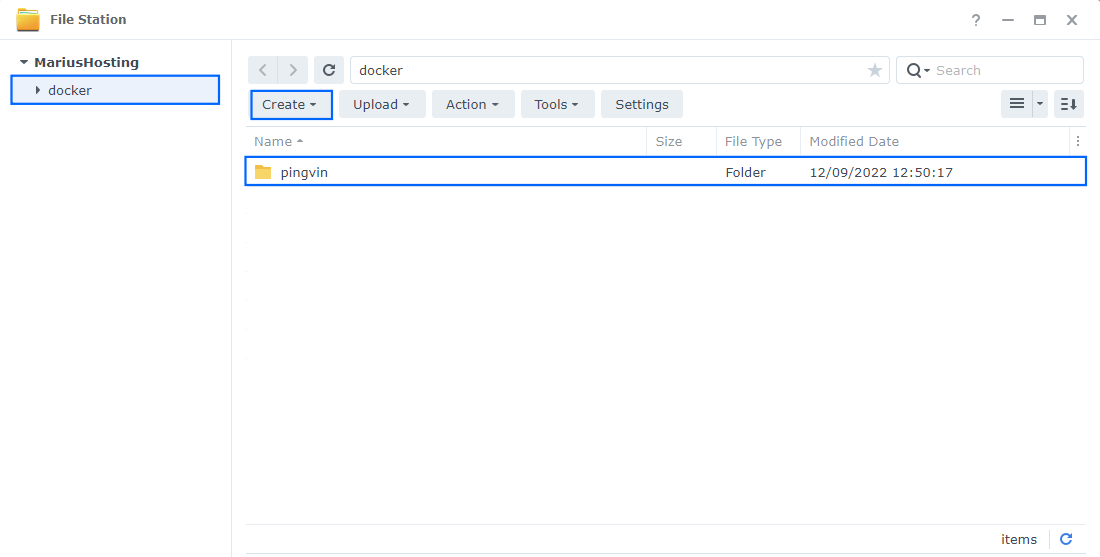
STEP 11
Now create one new folder inside the pingvin folder that you created at STEP 10 and name it public. Follow the instructions in the image below.
Note: Be careful to enter only lowercase, not uppercase letters.
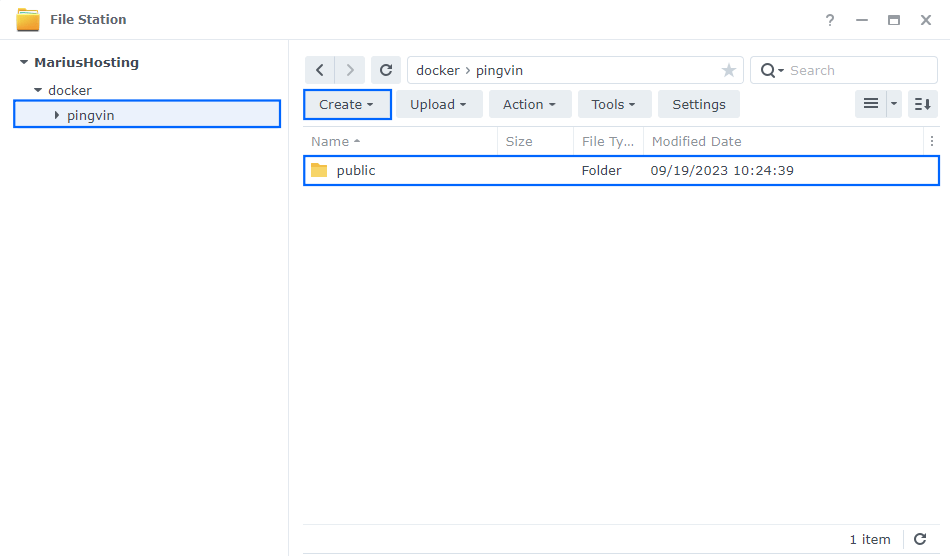
STEP 12
Right click on the pingvin folder that you have previously created at STEP 10 then click Properties. Follow the instructions in the image below.
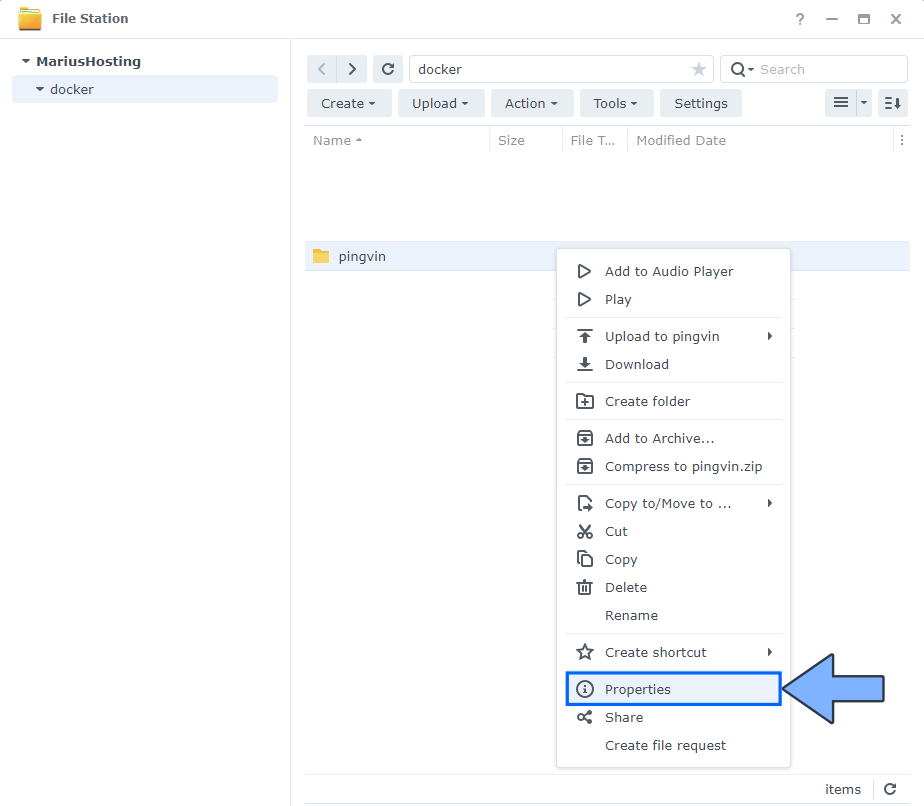
STEP 13
Go to the Permission tab then click Advanced options. From the drop-down menu choose “Make inherited permissions explicit“. Follow the instructions in the image below.
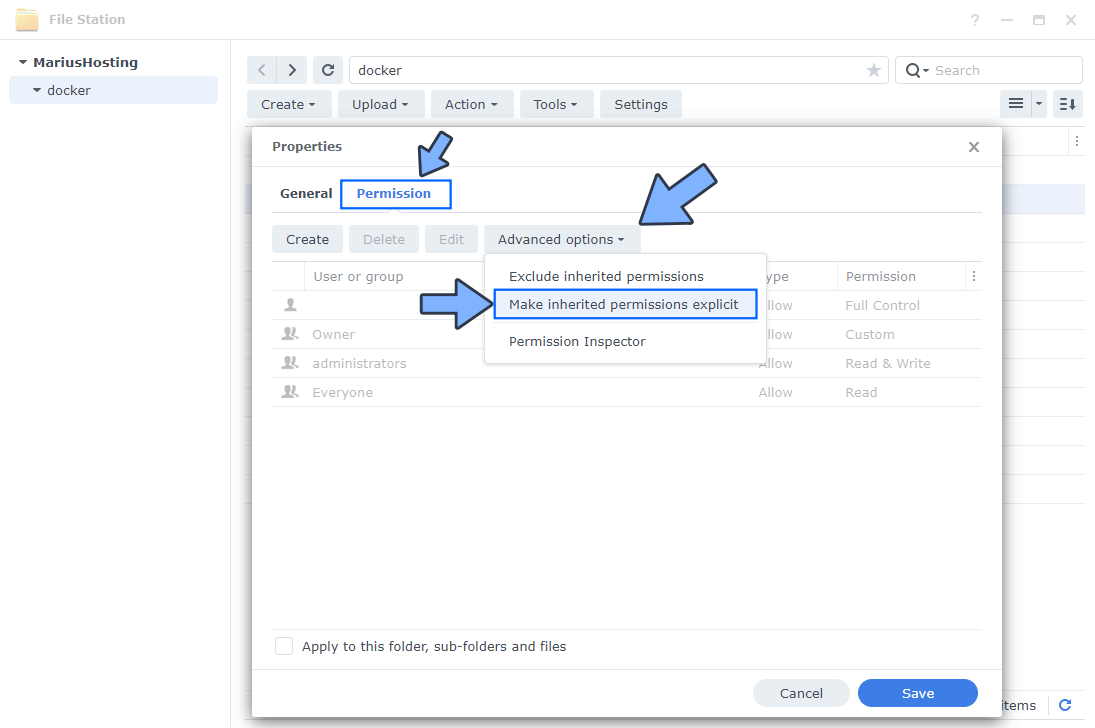
STEP 14
Select Everyone then click the Edit tab. Follow the instructions in the image below.
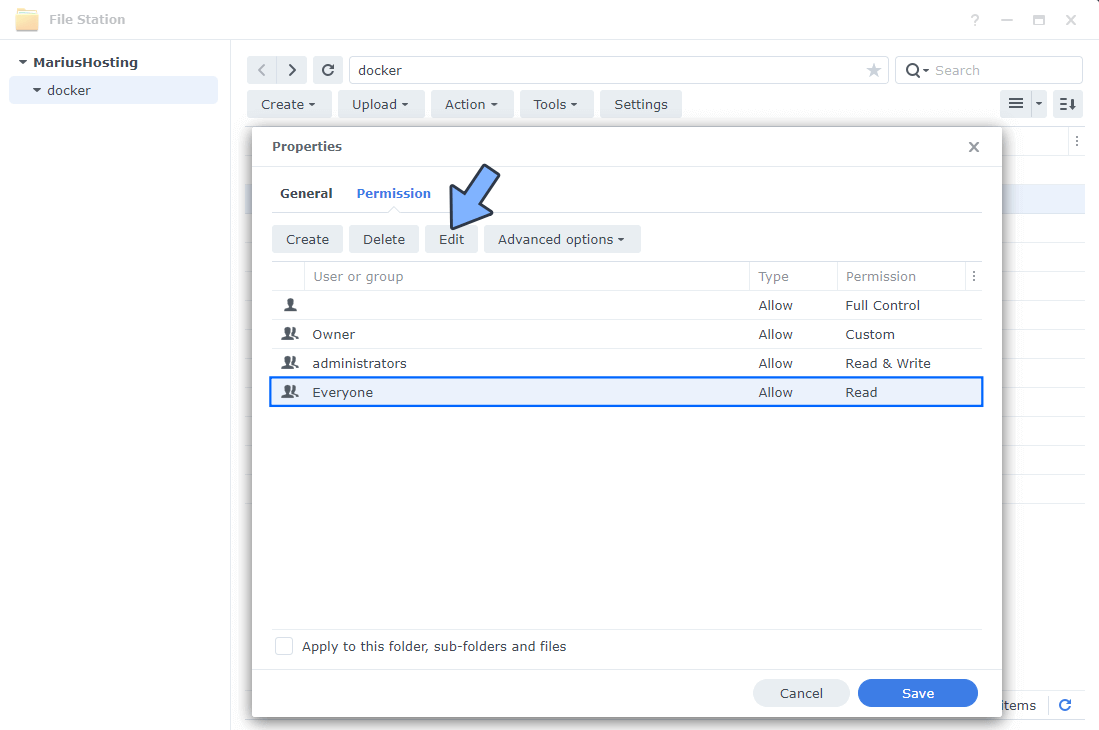
STEP 15
Check all Read and Write Permissions. Click Done. Follow the instructions in the image below.
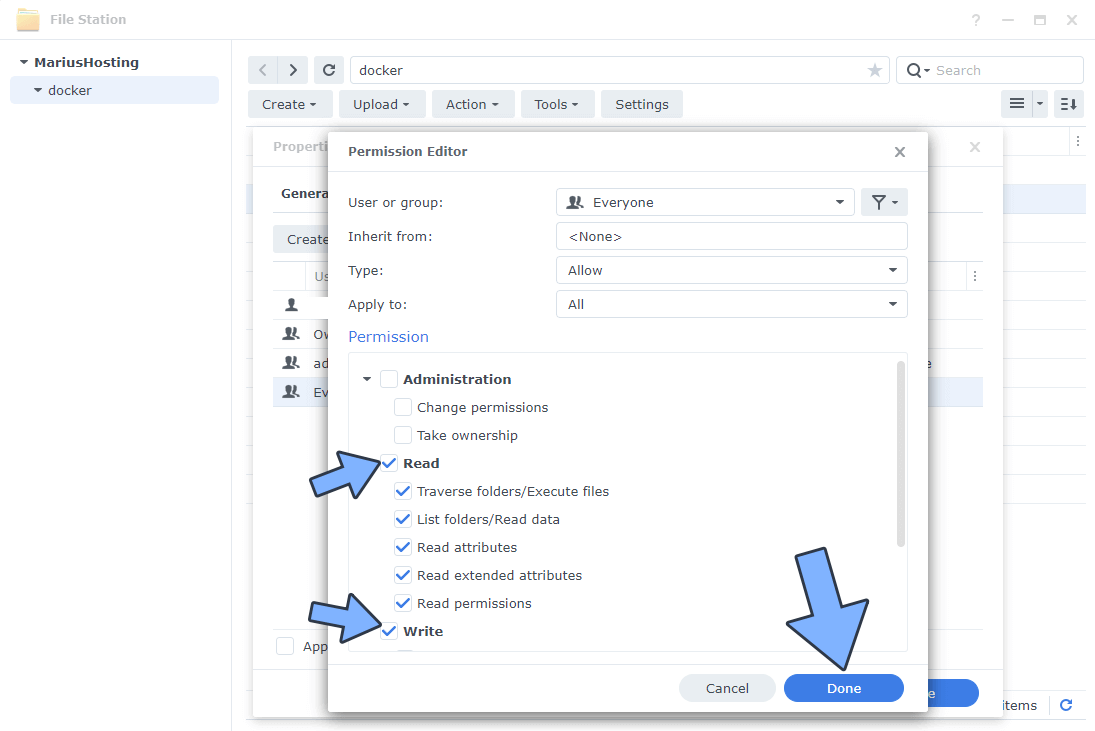
STEP 16
After you click Done on STEP 15, check “Apply to this folder, sub-folders and files“. Click Save. Follow the instructions in the image below.
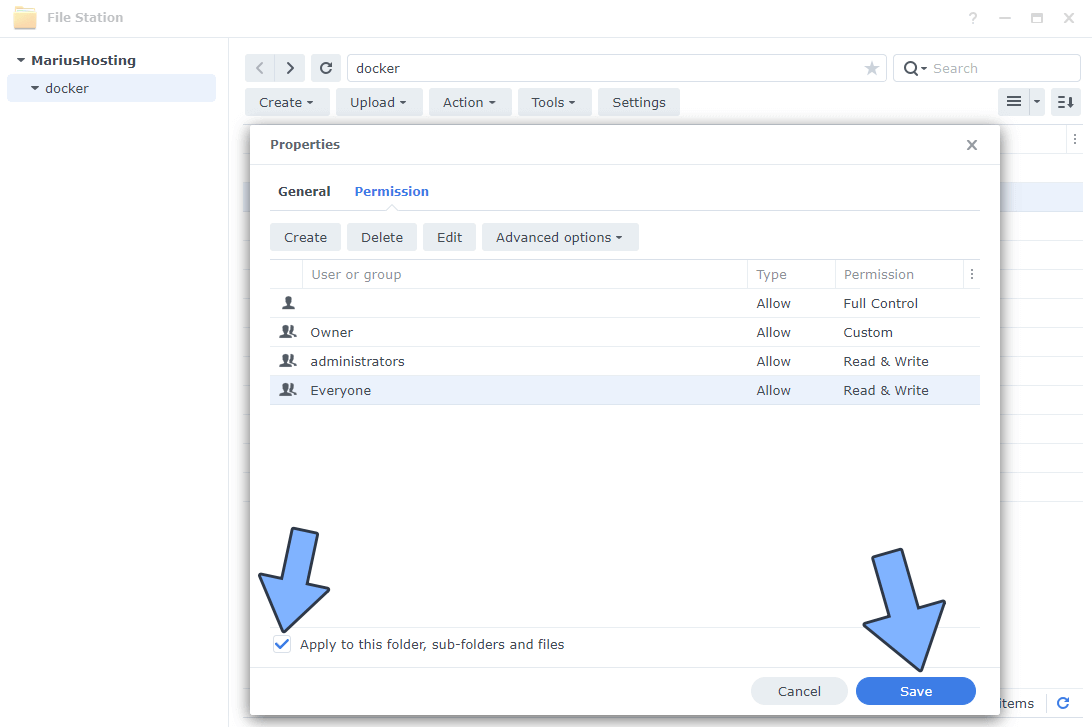
STEP 17
Log into Portainer using your username and password. On the left sidebar in Portainer, click on Home then Live connect. Follow the instructions in the image below.

On the left sidebar in Portainer, click on Stacks then + Add stack. Follow the instructions in the image below.

STEP 18
In the Name field type in pingvin. Follow the instructions in the image below.
services:
pingvin:
container_name: Pingvin-Share
image: stonith404/pingvin-share
healthcheck:
test: curl -f http://localhost:3000/ || exit 1
mem_limit: 2g
cpu_shares: 768
security_opt:
- no-new-privileges:true
restart: on-failure:5
ports:
- 6090:3000
volumes:
- /volume1/docker/pingvin:/opt/app/backend/data:rw
- /volume1/docker/pingvin/public:/opt/app/frontend/public/img:rw
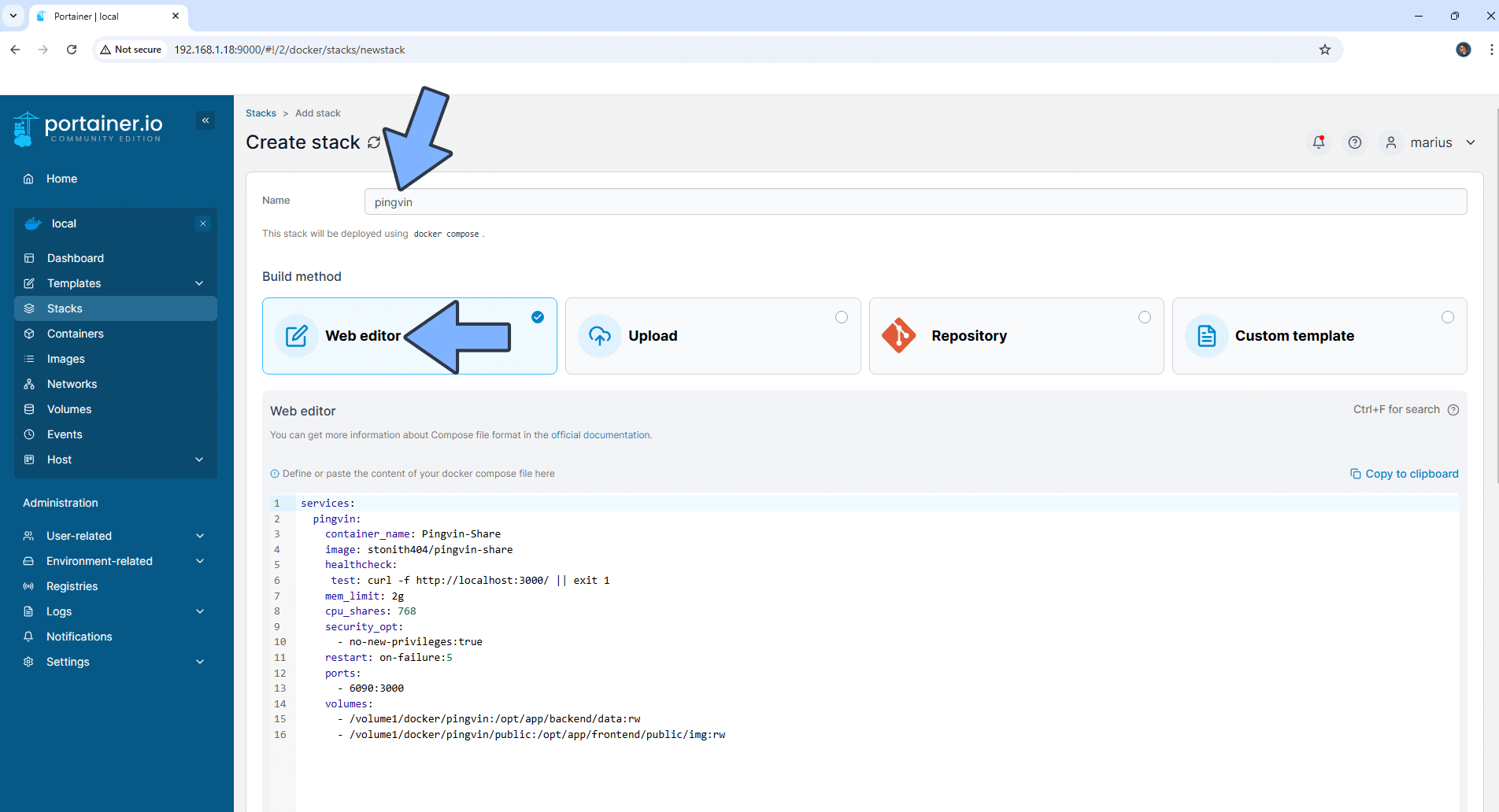
STEP 19
Scroll down on the page until you see a button named Deploy the stack. Click on it. Follow the instructions in the image below. The installation process can take up to a few minutes. It will depend on your Internet speed connection.
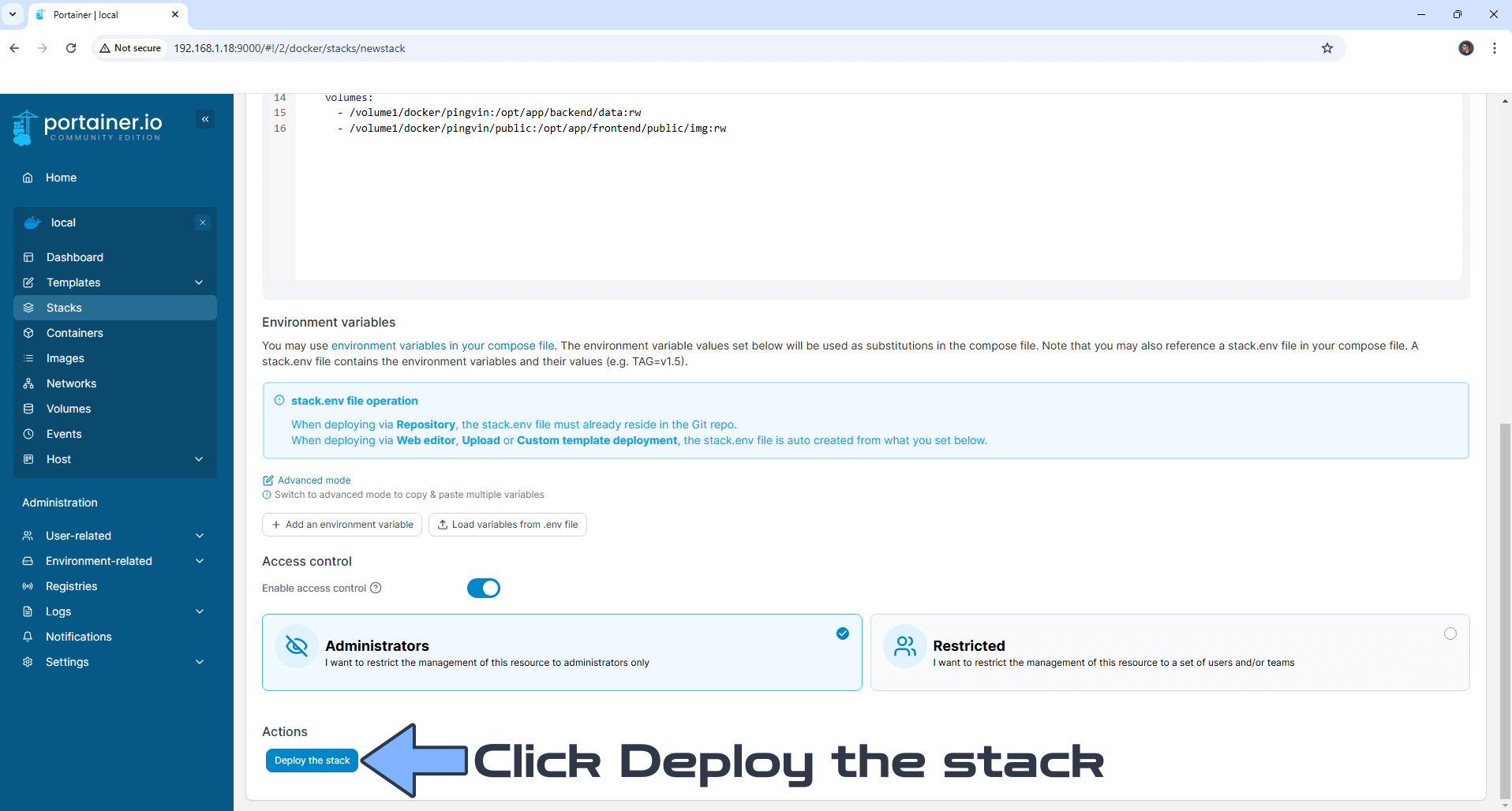
STEP 20
If everything goes right, you will see the following message at the top right of your screen: “Success Stack successfully deployed“.

STEP 21
🟢Please Support My work by Making a Donation. Almost 99,9% of the people that install something using my guides forget to support my work, or just ignore STEP 1. I’ve been very honest about this aspect of my work since the beginning: I don’t run any ADS, I don’t require subscriptions, paid or otherwise, I don’t collect IPs, emails, and I don’t have any referral links from Amazon or other merchants. I also don’t have any POP-UPs or COOKIES. I have repeatedly been told over the years how much I have contributed to the community. It’s something I love doing and have been honest about my passion since the beginning. But I also Need The Community to Support me Back to be able to continue doing this work.
STEP 22
Now open your browser and type in your HTTPS/SSL certificate like this https://pingvin.yourname.synology.me In my case it’s https://pingvin.mariushosting.synology.me If everything goes right, you will see the Pingvin Share main page. Click Sign up. Follow the instructions in the image below.
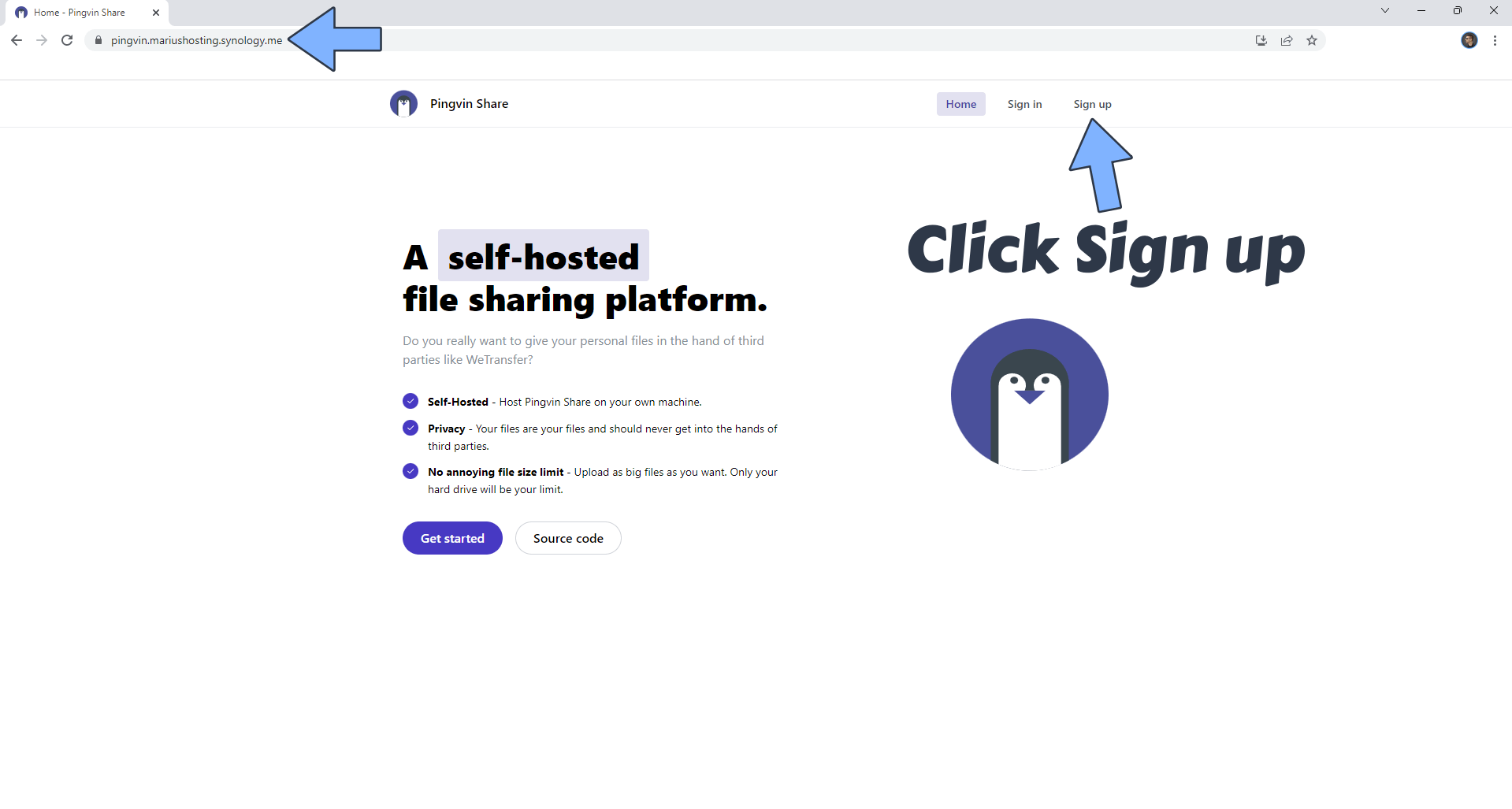
STEP 23
Type in your own Username, Email and Password then click Let’s get started. Follow the instructions in the image below.
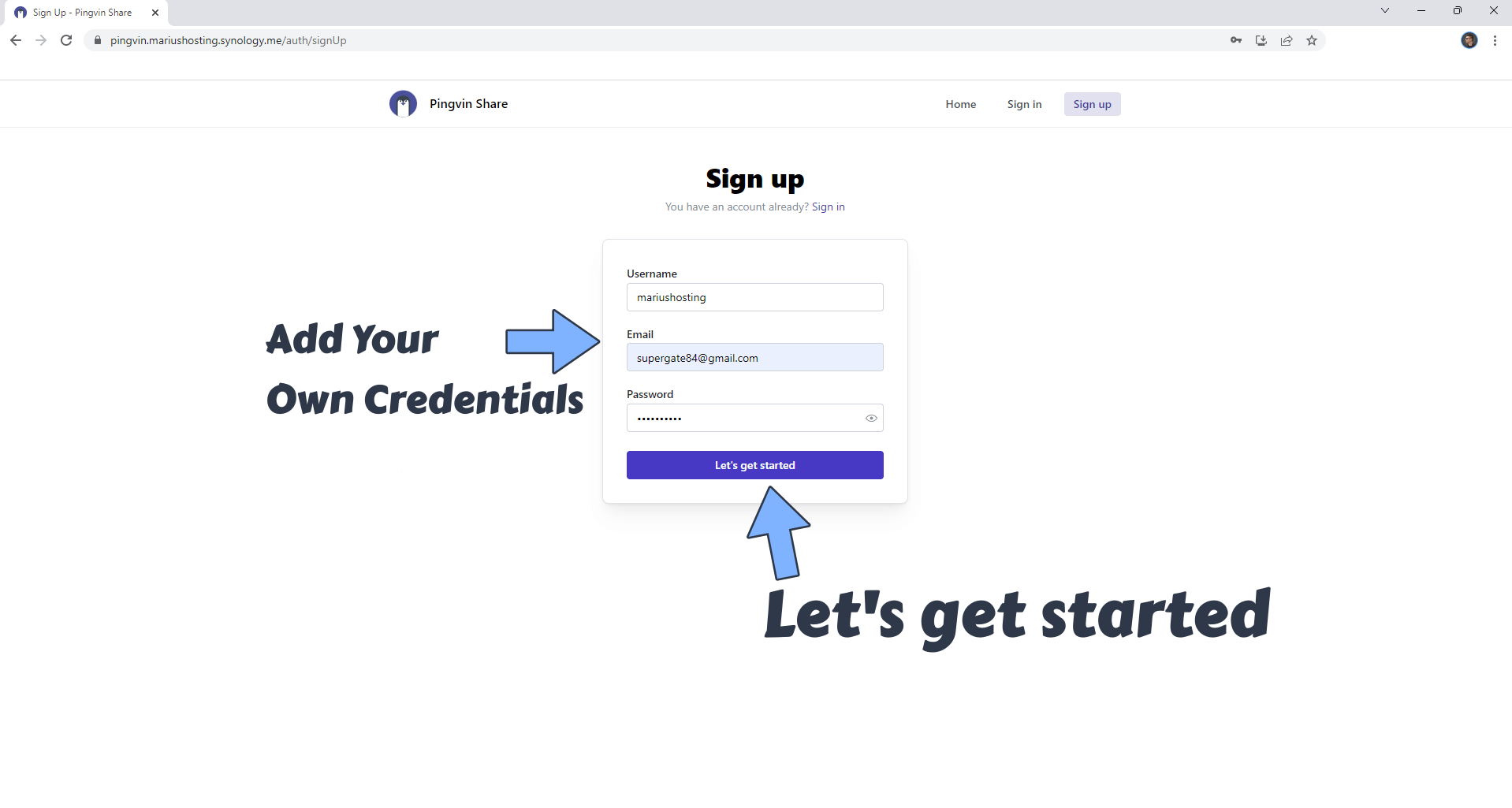
STEP 24
Click Customize configuration. Follow the instructions in the image below.
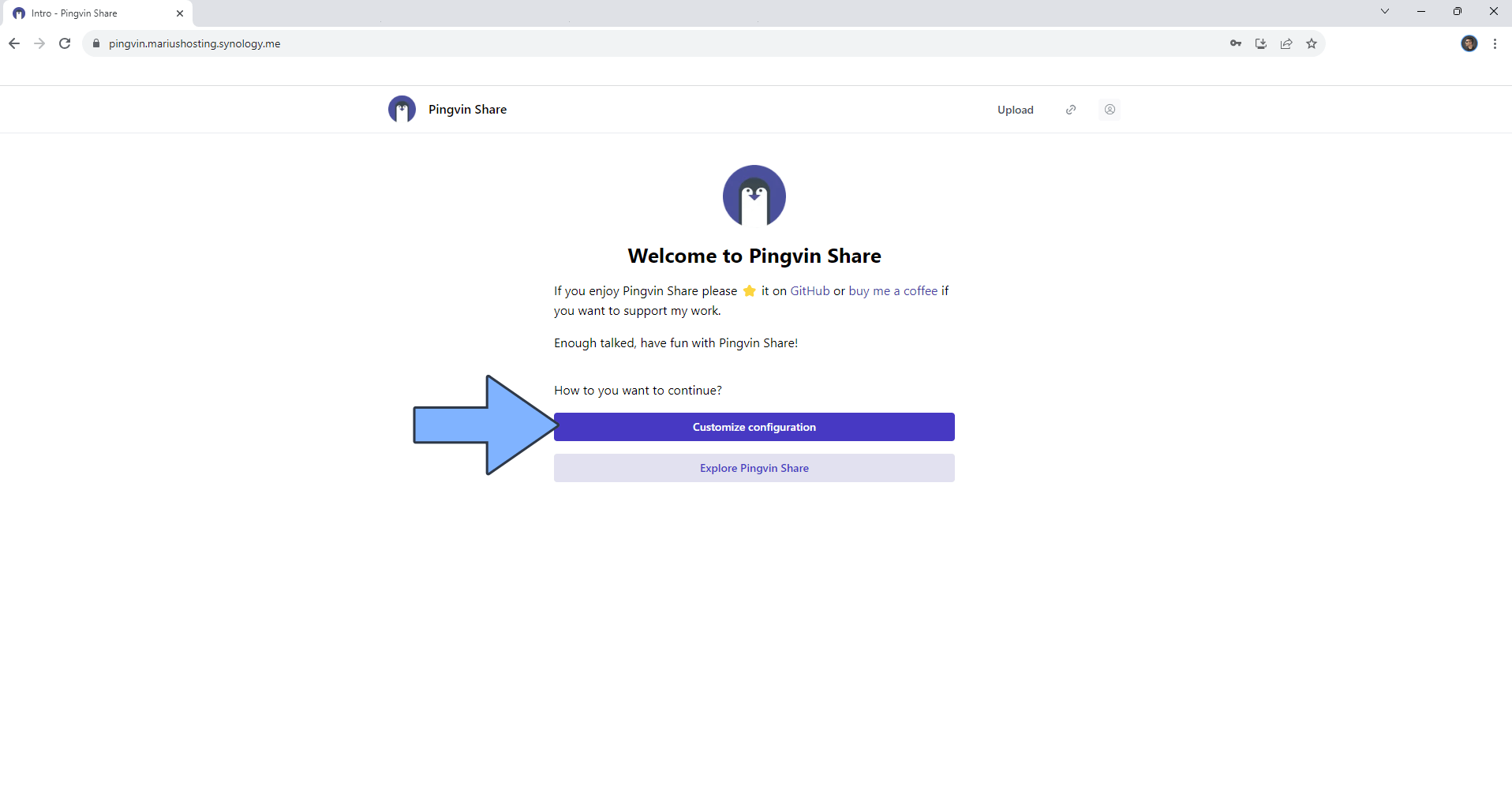
STEP 25
On the left sidebar, click General. In the APP URL area type in your own synology.me DDNS address that you have previously created at STEP 6 with https:// at the beginning then click Save. Follow the instructions in the image below.
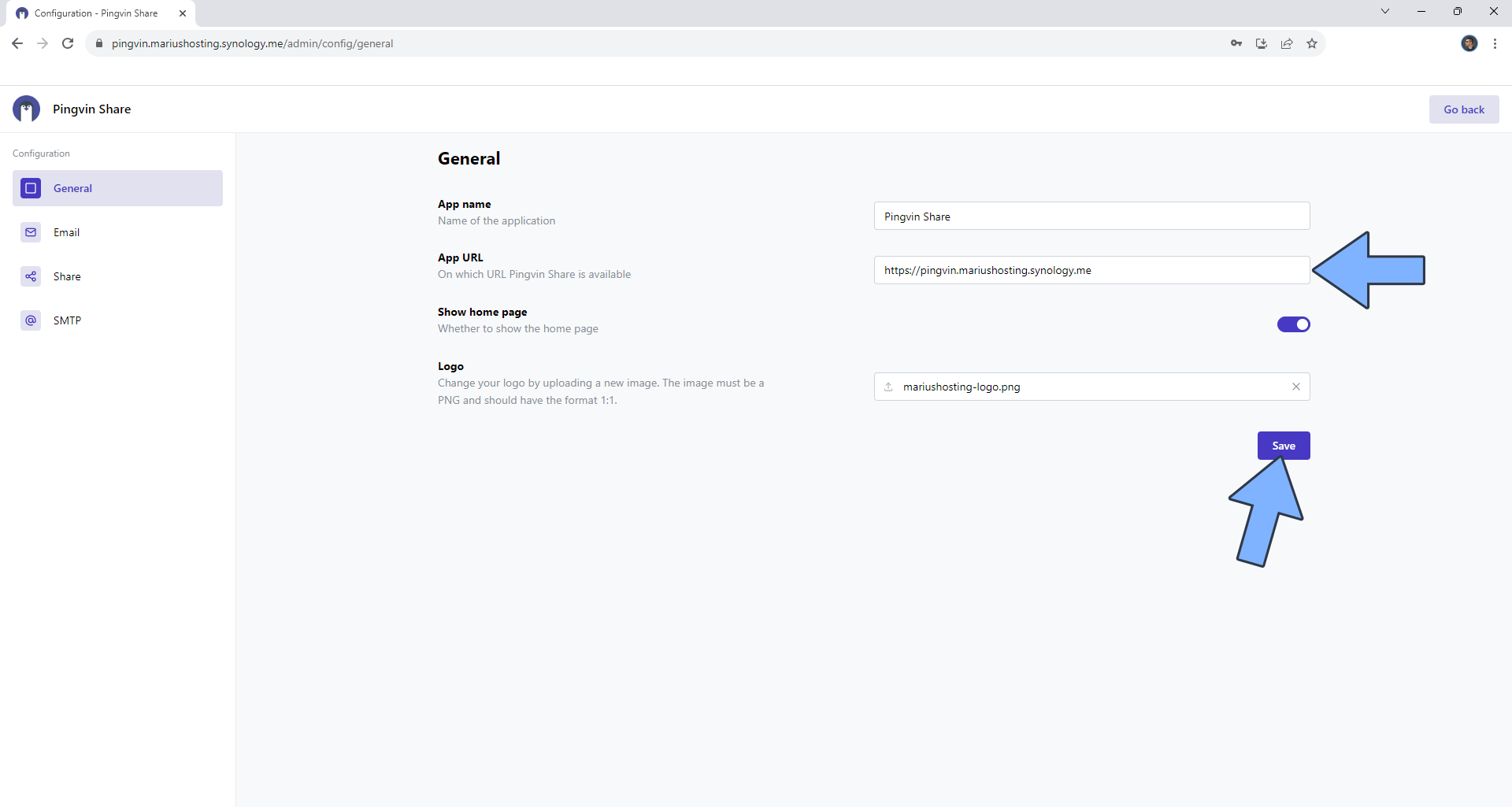
STEP 26
On the left sidebar, click Share. Disallow User registration by unchecking the Allow registration option. Click Save.
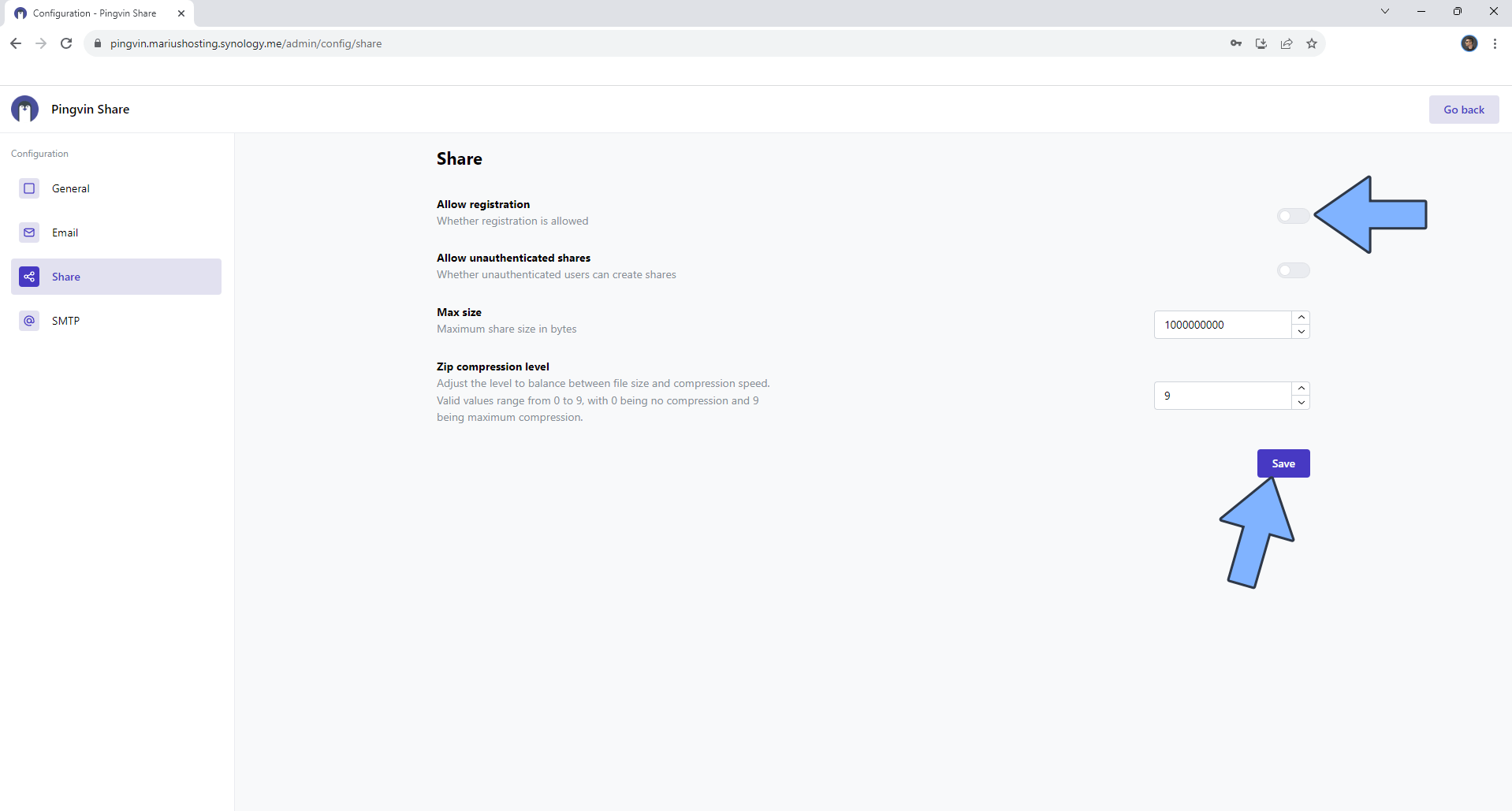
STEP 27
On the left sidebar, click SMTP. Follow my step by step guide on how to activate SMTP for your Gmail account. Enable SMTP if you want to add your own SMTP details to receive Pingvin notifications via email, then click Save. Follow the instructions in the image below.

STEP 28
At the top right of the page, click on the user icon then My account. Scroll down the page. Follow the instructions in the image below.

STEP 29
Once you reach the end of the page, select your favorite Color scheme. Follow the instructions in the image below.
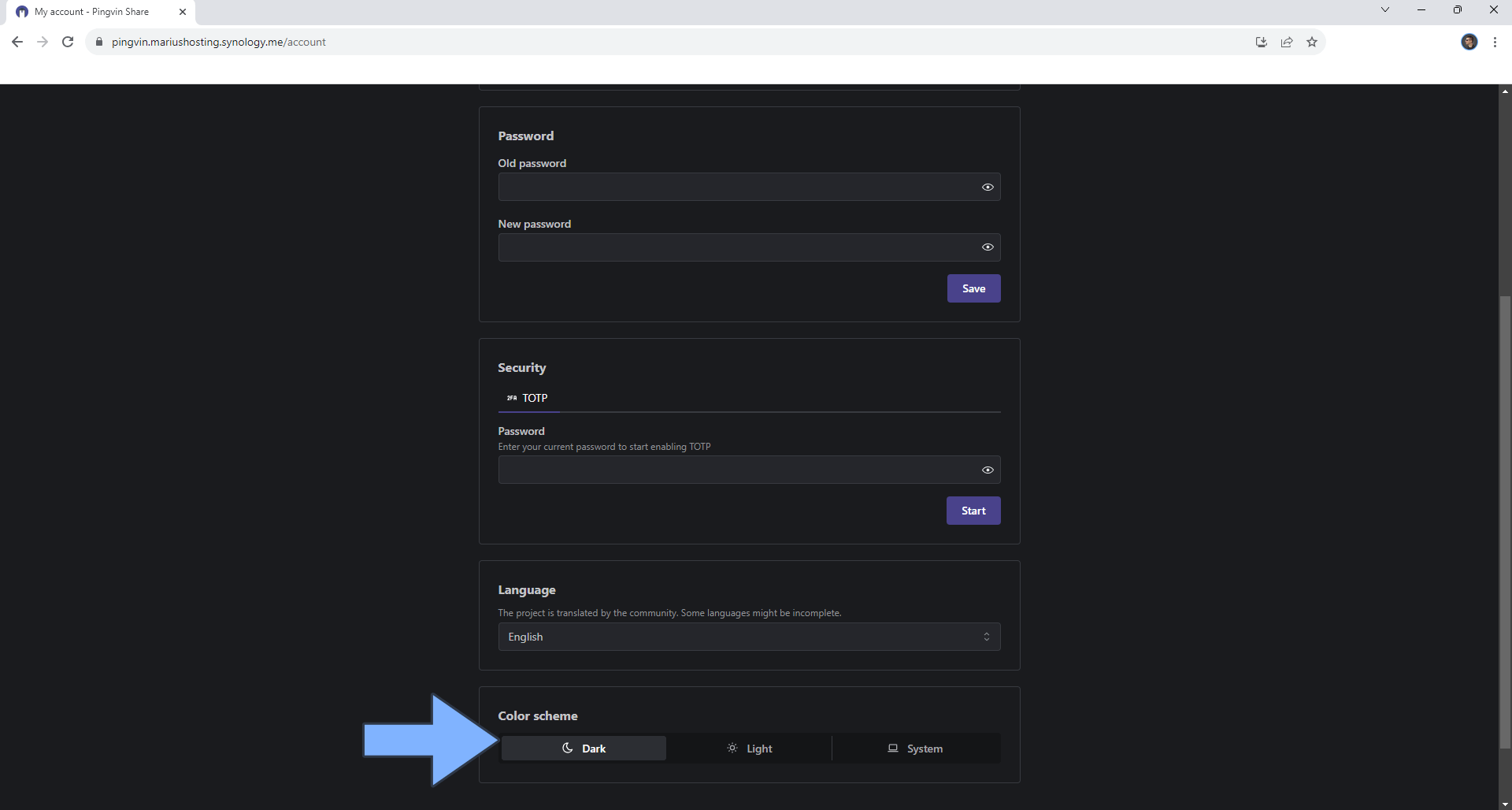
STEP 30
Upload files from your computer (drag and drop) then click Share. Follow the instructions in the image below.
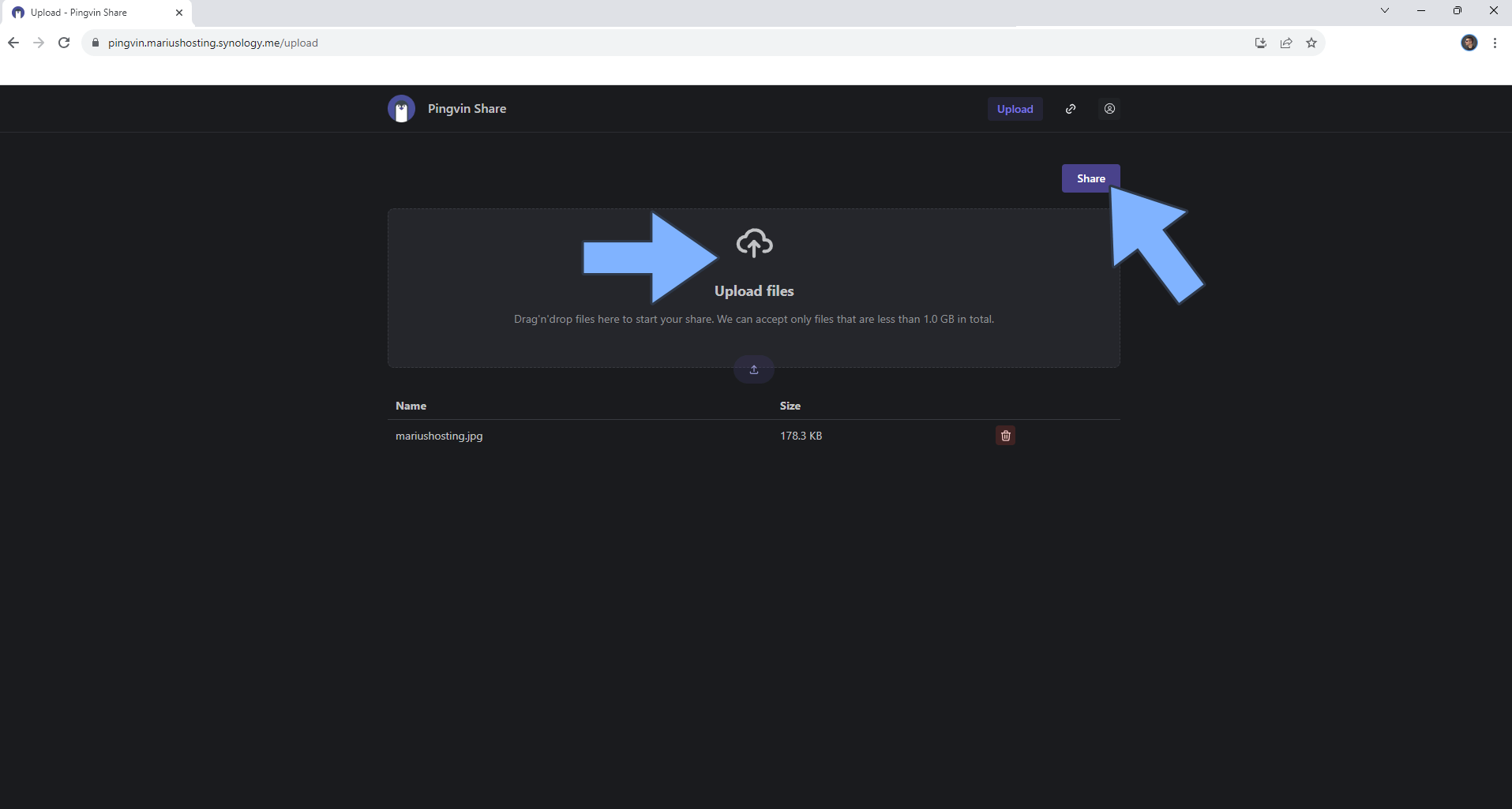
STEP 31
Click Generate to generate a random link or create your own Link name. Click Share. Follow the instructions in the image below.
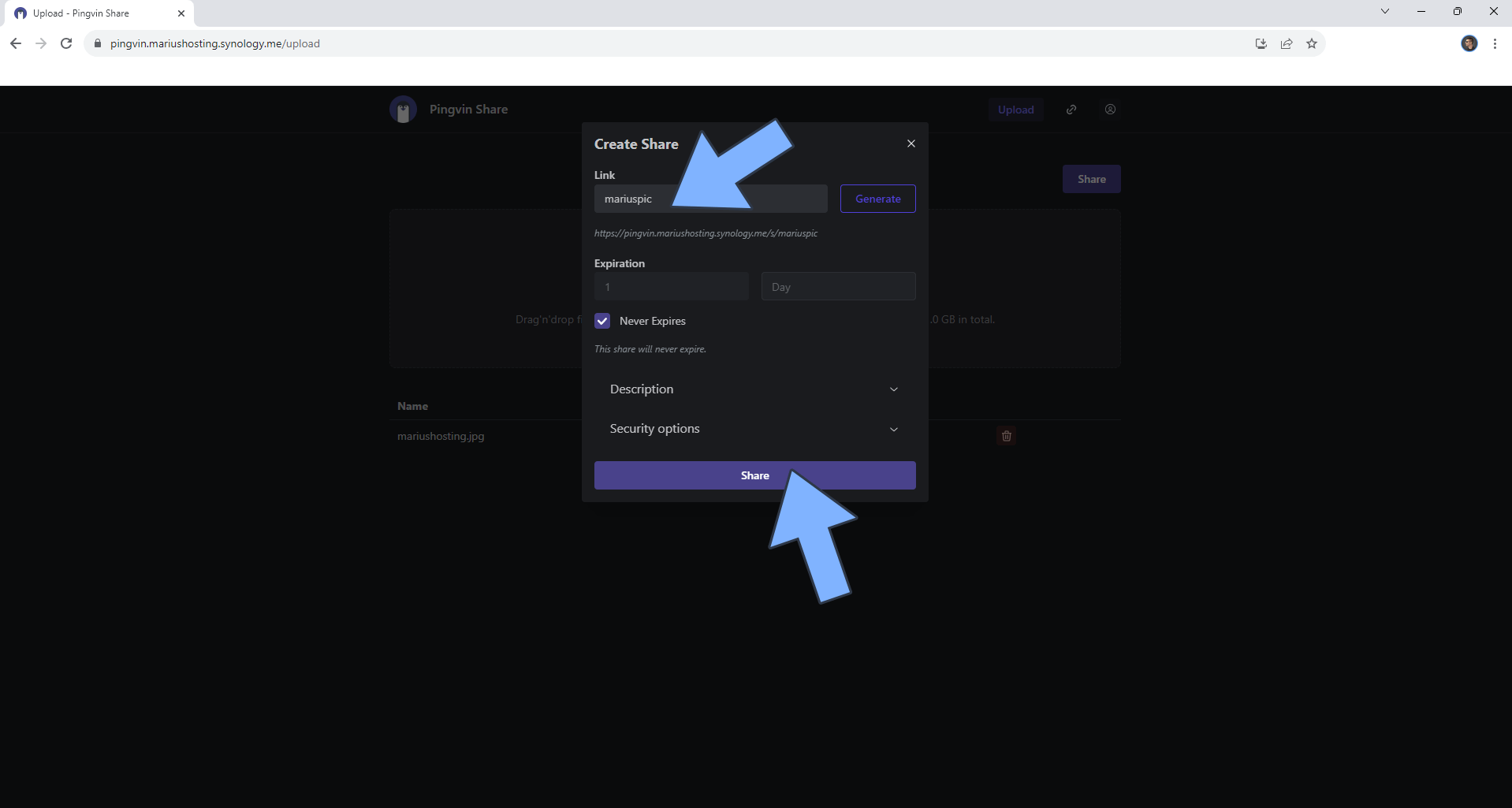
STEP 32
Copy your generated link, then share with your friends! Follow the instructions in the image below.
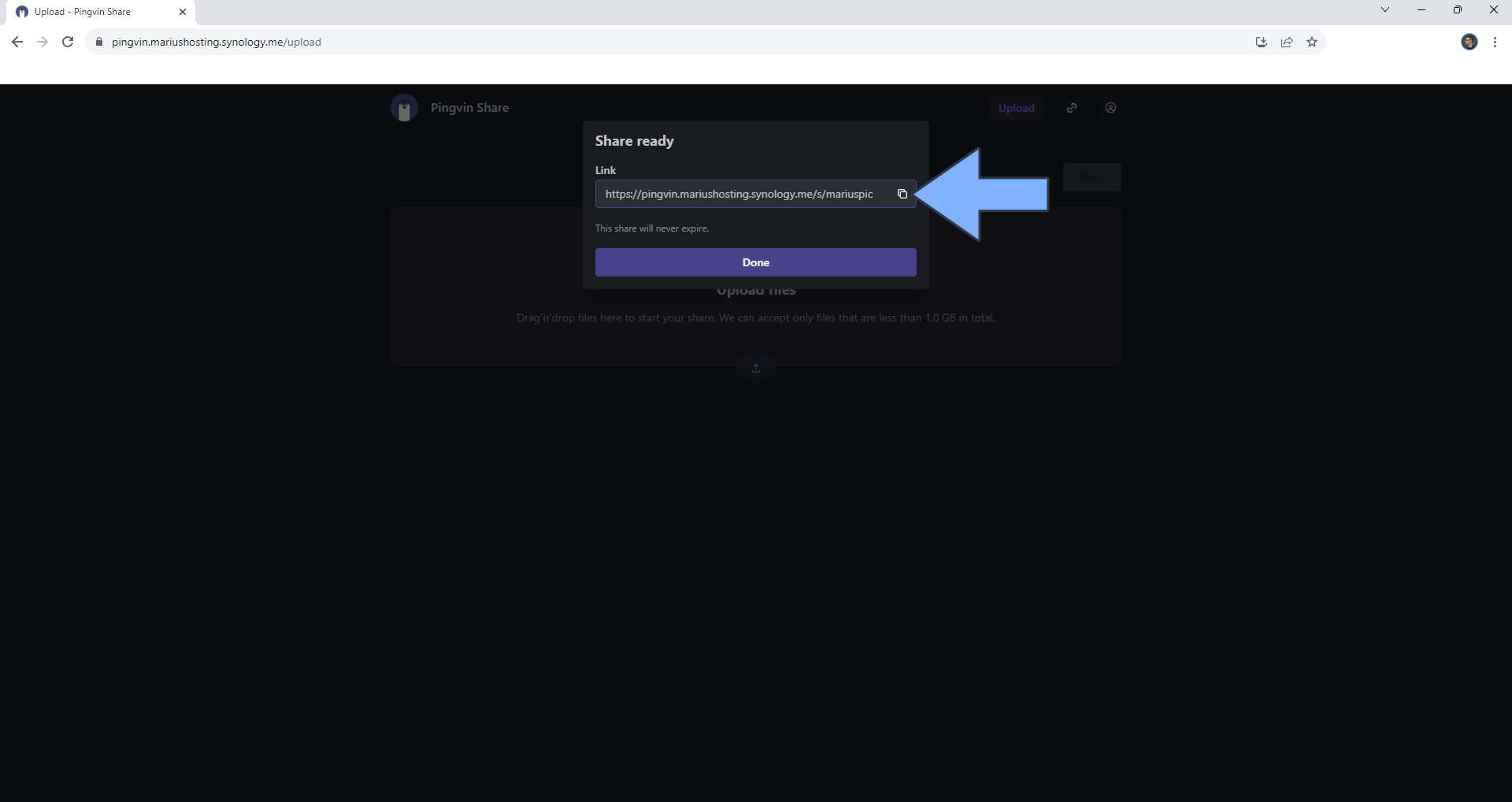
Enjoy Pingvin Share!
If you encounter issues by using this container, make sure to check out the Common Docker issues article.
Note: Can I run Docker on my Synology NAS? See the supported models.
Note: How to Back Up Docker Containers on your Synology NAS.
Note: Find out how to update the Pingvin Share container with the latest image.
Note: How to Free Disk Space on Your NAS if You Run Docker.
Note: How to Schedule Start & Stop For Docker Containers.
Note: How to Activate Email Notifications.
Note: How to Add Access Control Profile on Your NAS.
Note: How to Change Docker Containers Restart Policy.
Note: How to Use Docker Containers With VPN.
Note: Convert Docker Run Into Docker Compose.
Note: How to Clean Docker.
Note: How to Clean Docker Automatically.
Note: Best Practices When Using Docker and DDNS.
Note: Some Docker Containers Need WebSocket.
Note: Find out the Best NAS Models For Docker.
Note: Activate Gmail SMTP For Docker Containers.
This post was updated on Friday / August 22nd, 2025 at 5:35 PM
